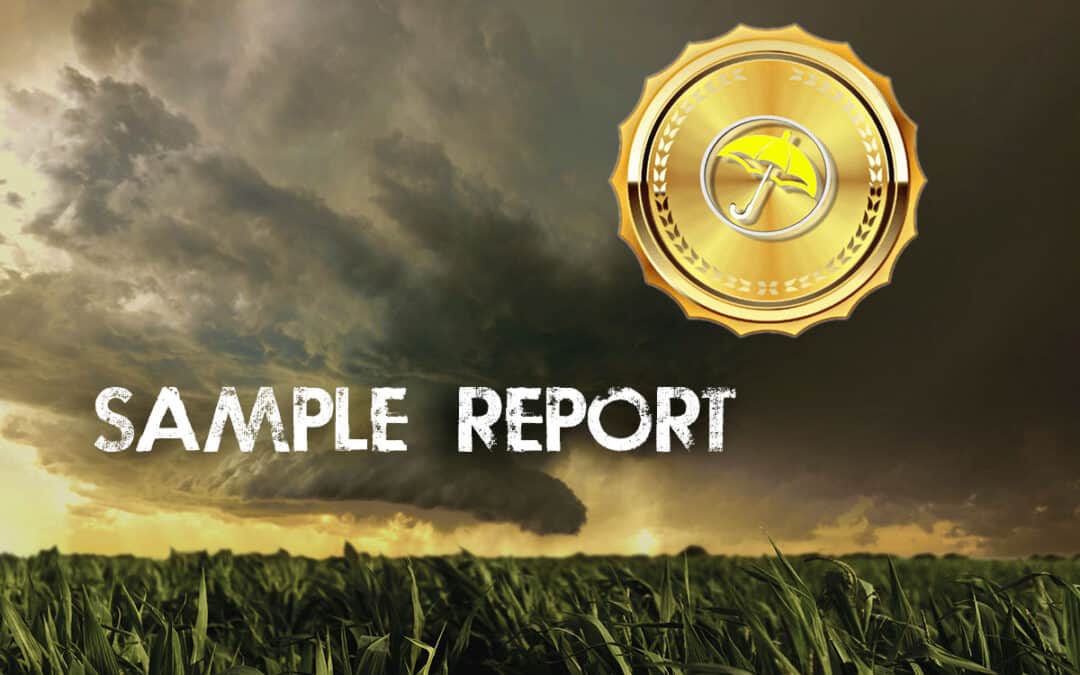In this Report:
Introduction: Market Market interview about El Niño, or not
The negative PDO and warm NINO12 relationship in weather forecasting for commodities
The heat content of global oceans soaring
Historical snowy winter for the Western United States: Implications for the corn belt summer weather?
More weather problems for global sugar?
In the face of the Plains drought, what have wheat prices done historically?
India’s record April heat. Any implications for the summer monsoon?
What happens to soybean prices following the worst Argentina droughts?
Introduction:
This is a very detailed report. I will have a brief update Wednesday night or Thursday.
The report has a recent interview about El Niño and global weather extremes (see below). El Niño may develop faster than I thought a month or two ago, but we need to see the SOI index go negative.
I also show where global weather extremes are located and suggest some possible implications for summer weather (though it is early).
Teleconnections such as the -PDO and warming at NINO12 will be critical for late spring and summer weather.
My highest confident trades recently were of course the homerun long coffee a few weeks ago, still friendly sugar (though it is over-bought) and bearish July KC wheat on any further rallies.
Enjoy,
Jim Roemer

PLEASE CLICK ON THE ABOVE IMAGE for a YouTube video on my website
(about 30 minutes long, if you are interested).
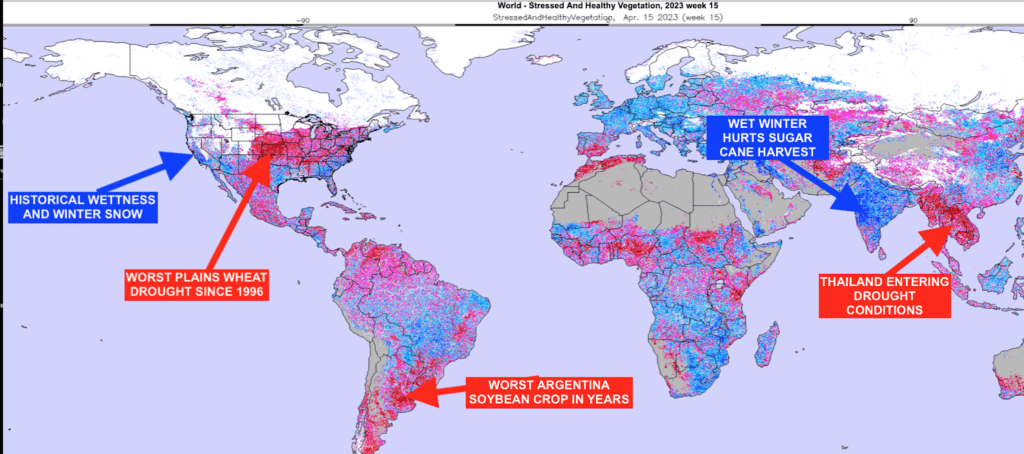
The negative PDO : warm NINO12 relationship to forecast commodity weather
The cooling off the coast of California was inspired by the record floods and snows and atmospheric rivers last winter. Although it isn’t “written in stone,” I present some possible late spring and summer weather forecasts from my ClimatePredict software.
Notice how my program suggests a return to dryness over the Plains wheat areas, after this week’s big rains. However, I may have to second-guess this model and predict a slowly improving May weather pattern for Plains wheat.
Notice how warming at NINO12 and a -PDO may suggest a warm U.S. summer. If this occurs, it would put the breaks on natural gas prices, but not until deeper into the spring or early summer. I also see weather problems for Thailand sugar and possibly the western corn belt (stay tuned).
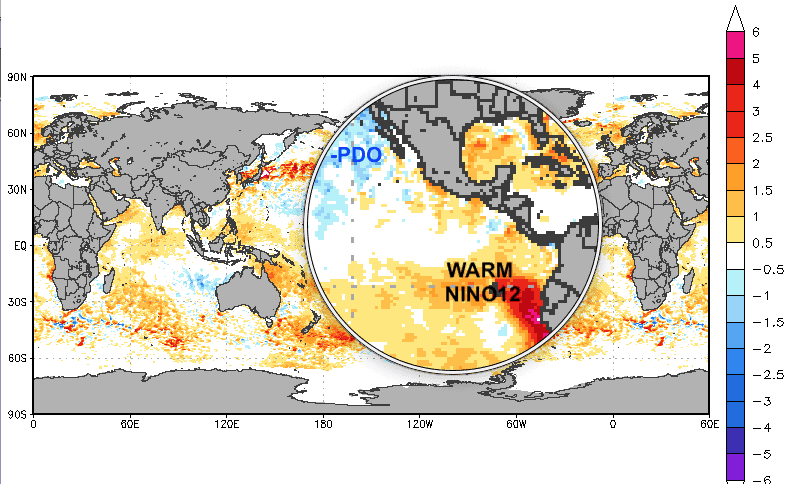
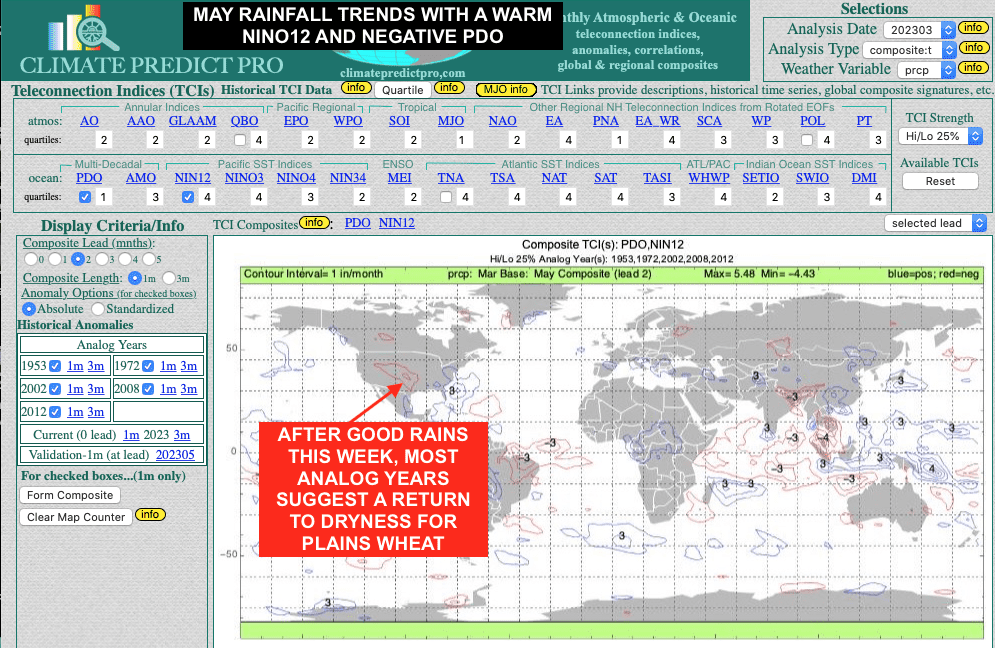

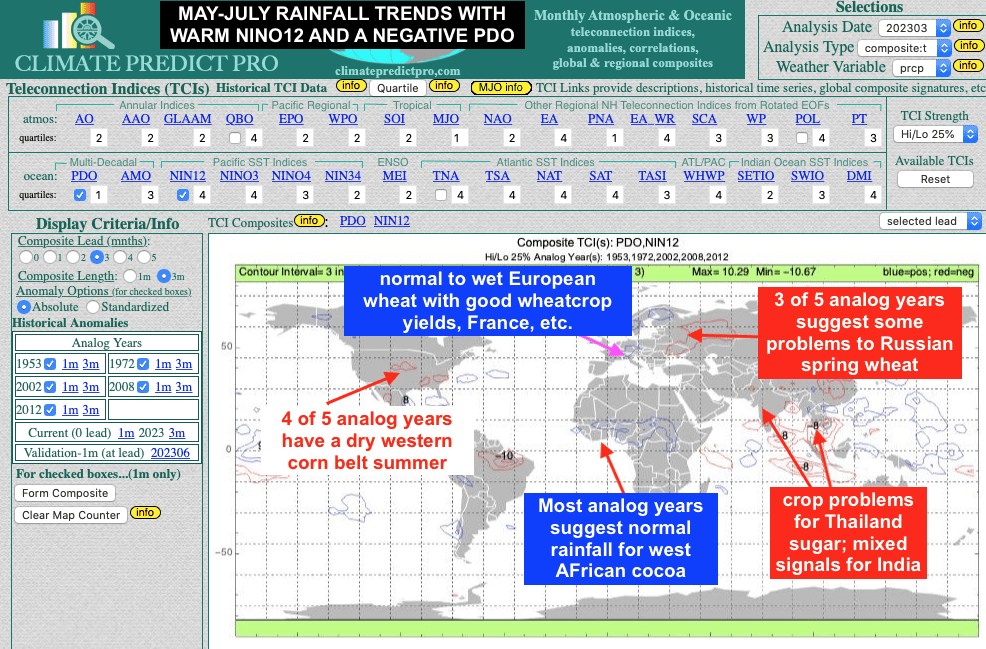
The heat content of global oceans is the highest in recorded history
So… you think the planet is not warming and it is just a normal cycle? No way, think again. This is what global ocean temperatures have been doing since 1960. While everyone and their dog is talking about El Niño due to the warming ocean, the SOI index needs to change.
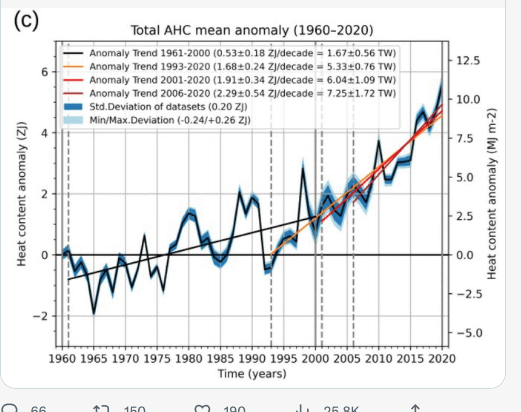
Historical snowy winter for the Western United States: Implications for summer weather in the corn belt?

There is no reason to trade corn and soybeans on a longer-range forecast, 2-4 months from now. Mostly, I mentioned that without a major drought this summer, corn prices could go to $4.50 and soybeans $11 per bushel. Currently, the market is looking ahead to the end of La Niña and a potential overall bearish grain outlook.
Nevertheless, I can look at a million different studies until I am blue in the face. The last thing I want to do is confuse everyone.
Both the study towards the top of this report and this one do portend some potential weather problems this summer for the western corn and soybean belt, yet again!

Projected July-August temperature trends following record snowy western U.S. winters
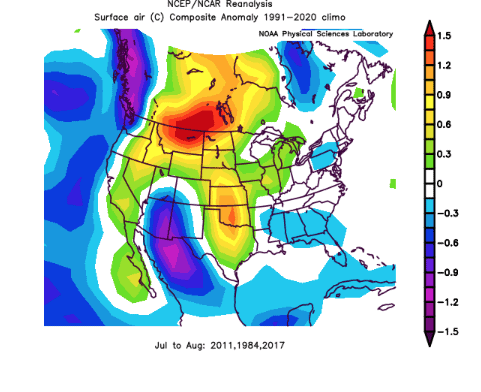
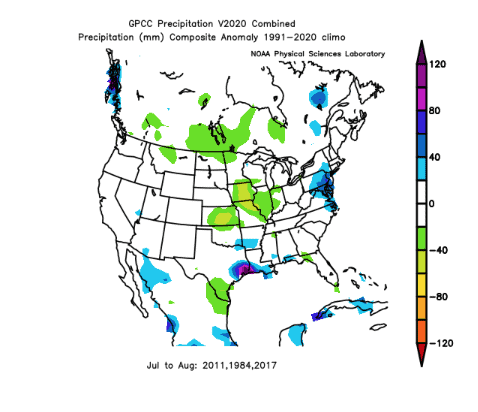
Projected July-August rainfall trends following record snowy western winters
More weather problems for global sugar?
Sugar prices soared last week on tight supplies, wet weather for the Brazil harvest, and worries over El Niño coming. However, the BRAZIL weather pattern appears a bit drier now, after recent rains. Hence, it is possible this may ease some of the short-term concerns in the market.
So what other weather events may drive sugar prices higher or lower this summer and fall? Of course, the Indian Monsoon and also crop conditions and weather in Thailand (#3 biggest producer of sugar cane). Notice below how warming a NINO12, combined with a negative PDO in the North Pacific suggests dry weather issues for Thailand.
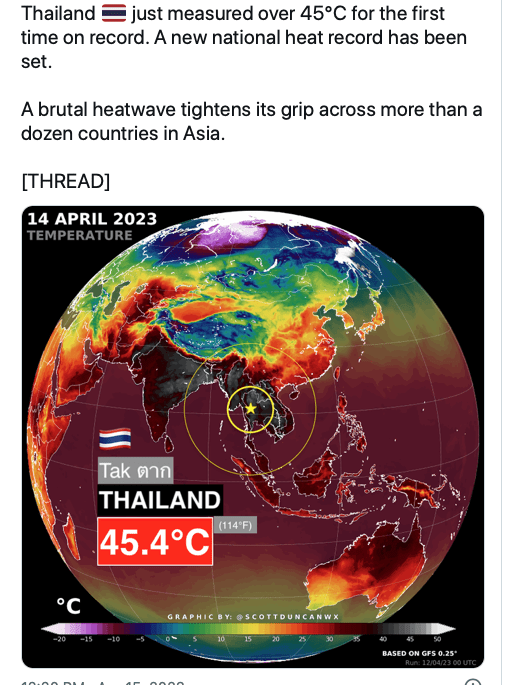
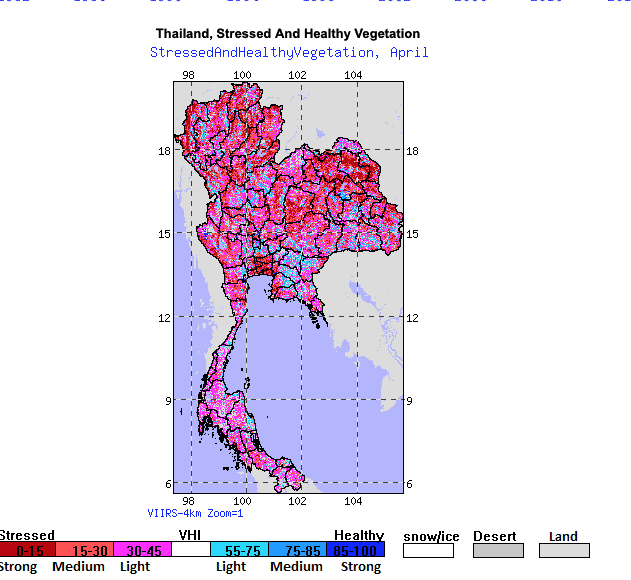

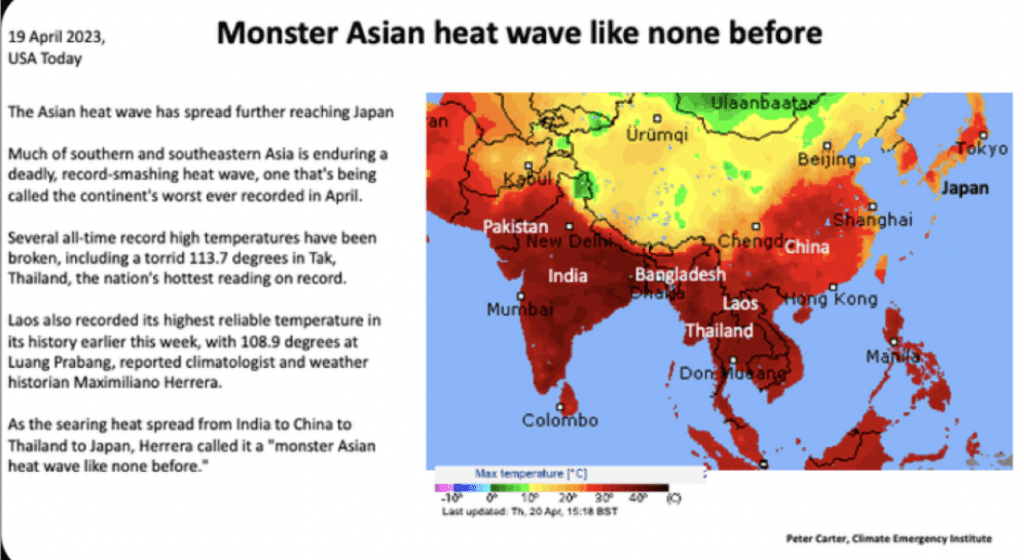
In the face of the Plains drought, what have wheat prices done historically?
While the U.S. wheat crop is in fair to poor condition, seasonally, look what happens to wheat prices as we go into the late spring. In three of four cases, prices went lower “later.” The big caveat will be Russia’s war on Ukraine, and how weather and crop conditions fare the next few months in the U.S. Plains, Europe, and Russia.
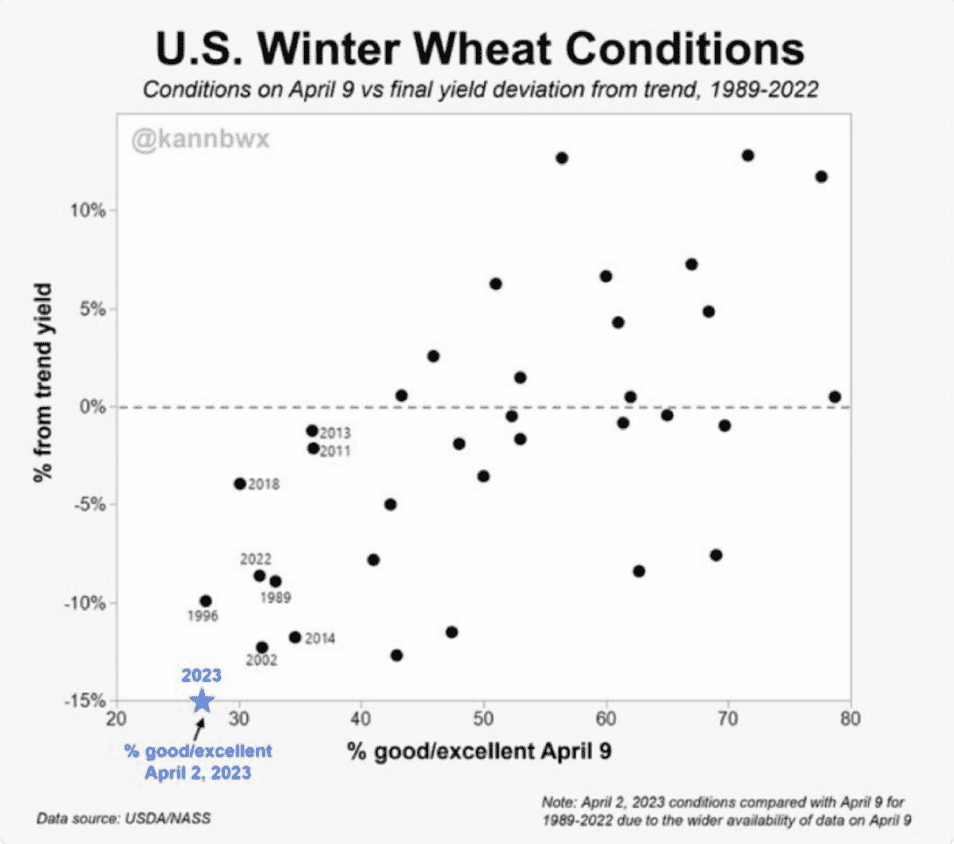
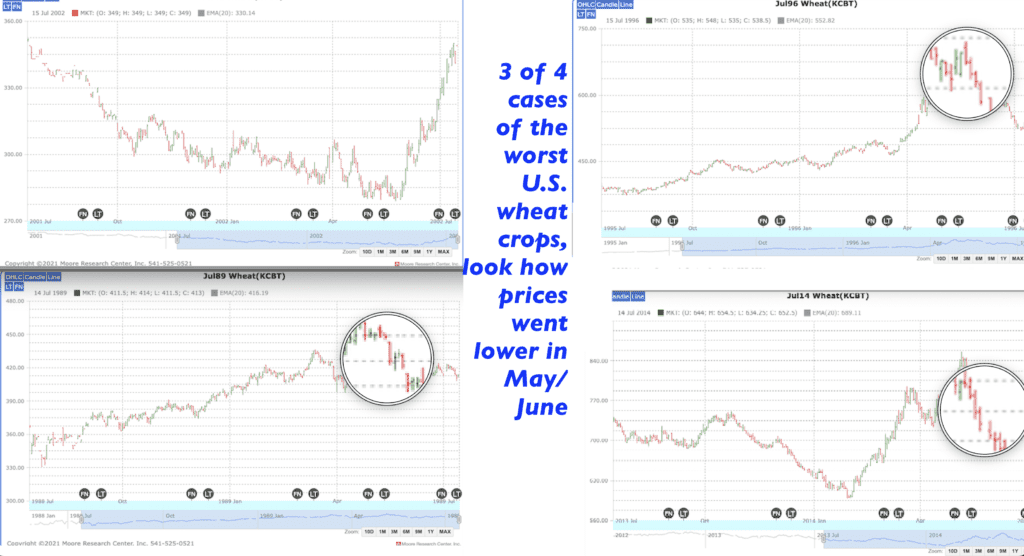
What happens to soybean prices following the worst Argentina droughts?
Ahhh..stay tuned. Right now, demand has been terrible and has pressured the market. We have basically a bearish longer-term view. But how so? After all, some of my studies above talk about a hot-dry summer.
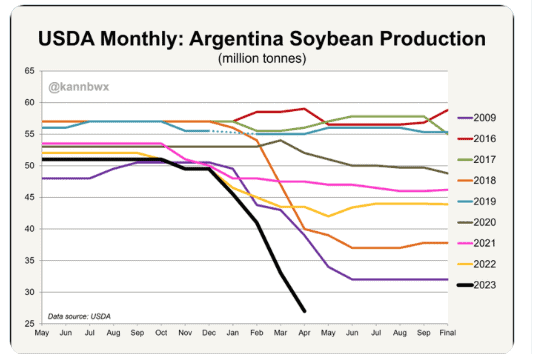
India’s record April heat. Any implications for the summer monsoon?
Stay tuned for further studies as the weather in India this summer will affect the cotton, rice, and sugar markets.
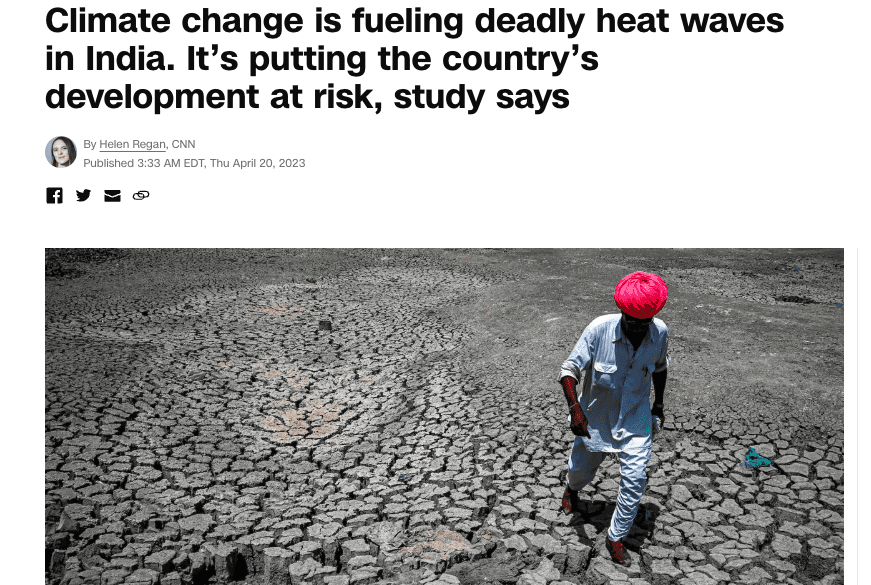
WEATHERWEALTH TRADE IDEAS
Sugar: Breaks long-term resistance but Brazil harvest weather improving more than expected
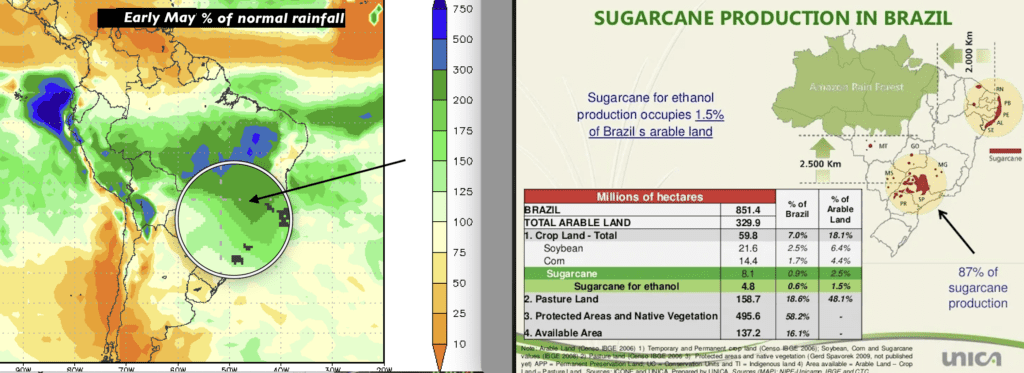
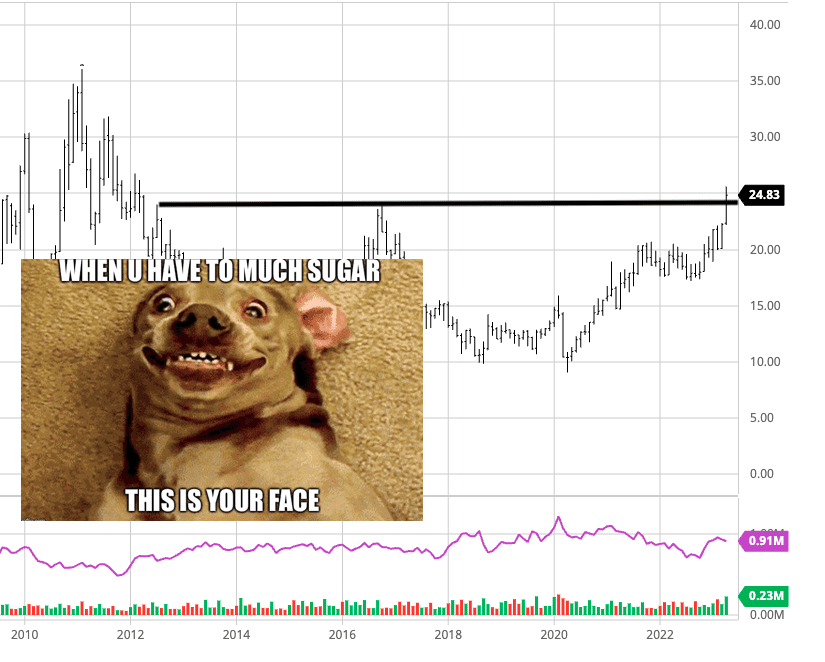
Sugar prices took out long-term resistance last week. The market is way overbought with respect to specs. Dry weather in Brazil again is an excuse for a partial sell-off, but if it turns wet again by May and Thailand and India have crop problems, the market should remain bullish.
Wheat: Spreads between KC and CBOT reverse as important rains to hit the Plains this week
There is talk again of possible issues with the export corridor of grain from Ukraine due to Russia’s war. My bias is to sell rallies in KC wheat rallies on this, or to sell July futures or out-of-the-money call options in wheat (I actually said this last Wednesday).
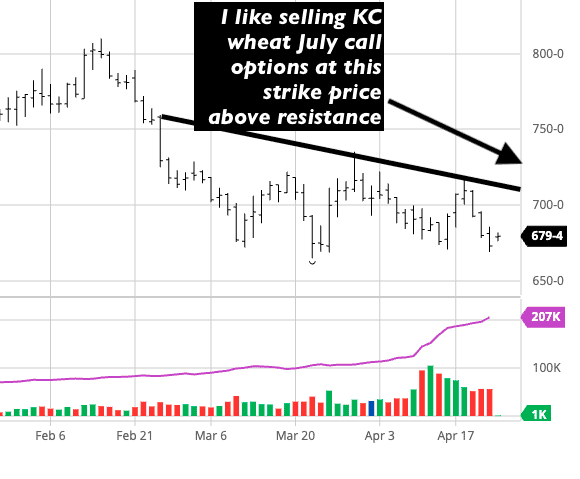
I like looking at markets that are over-bought or over-sold. There is, however, a short position right now in wheat, a poor U.S. crop, and the Russia-Ukraine situation. Otherwise, my spider (see below) would be at least a -8 to -10.
I actually sent a flash update late Tuesday to exit any long wheat positions and that my bias was more bearish. Wheat collapsed mid-late week some 30-50 cents off the highs.
Monday evening crop condition report should show wheat crop ratings fall even more. So… why sell into it? The best rains in months and possibly more in 11-15 days, plus my study above about historic wheat price action.
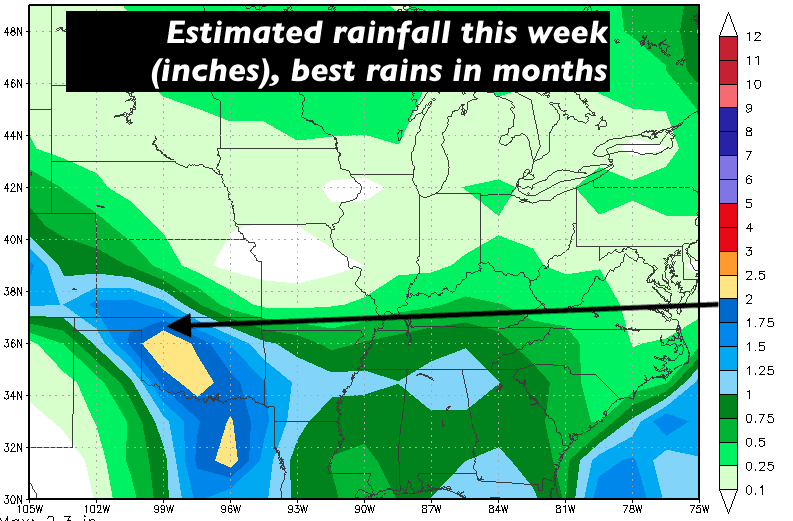
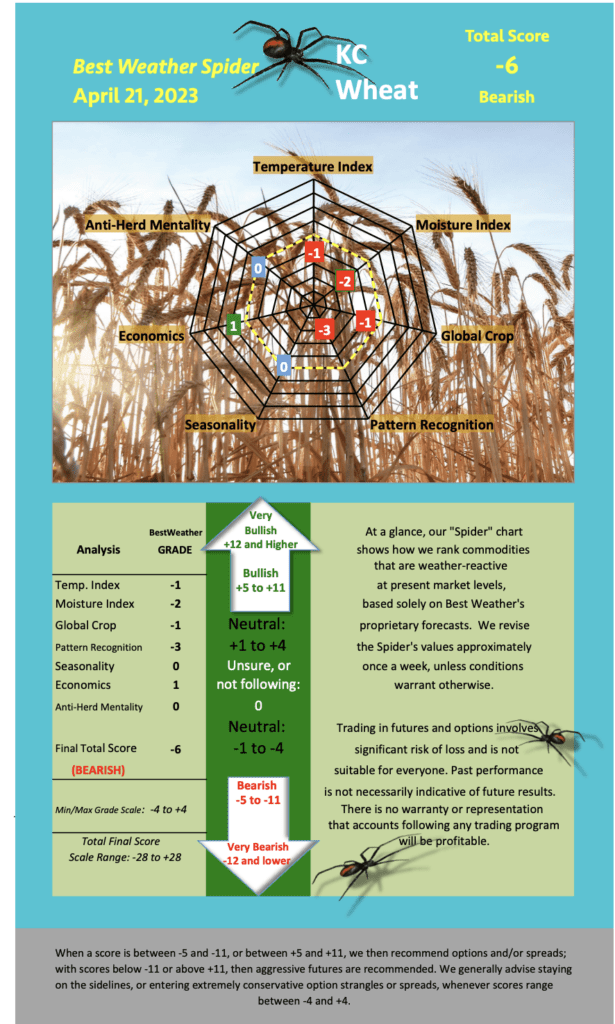
Corn: Original bullish December Spider turned more bearish in the middle of last week
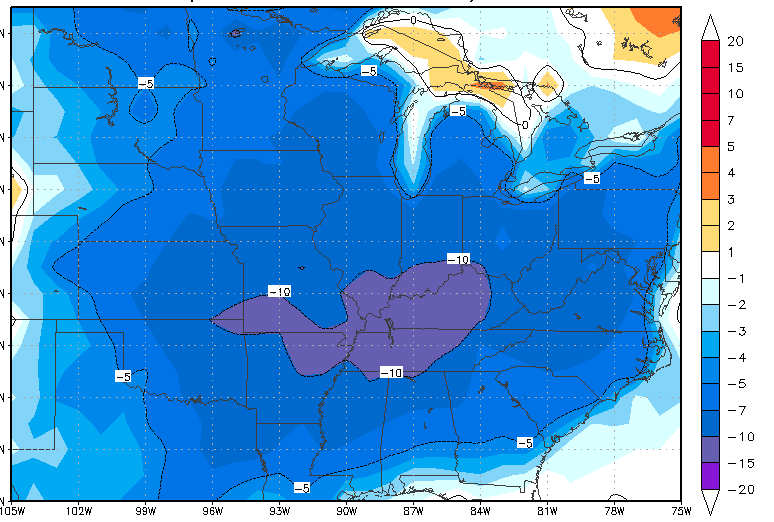
This week, cool weather will slow corn planting, but it does not appear enough to cause major concerns. The demand side of the equation has been hurt recently. As we get deeper into spring and summer I will have higher confidence advice. About a month ago, I did mention for farmers to hedge some of their 2023 production. However, it is early, and do not advise “selling in the hole” right now.
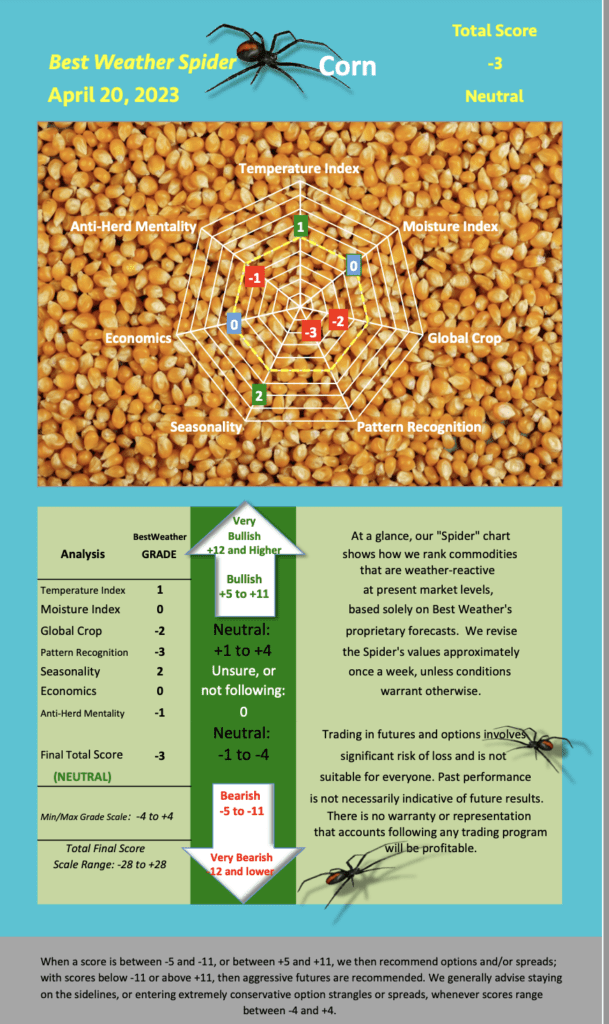
Cocoa: Continues to rally on worries over El Niño and West African farmers not selling much of their crop
Concern about the quality of some West African cocoa crops has limited any declines in cocoa prices. Cocoa farmers continue to struggle with the lack of fertilizer and pesticides as the war in Ukraine has limited Russian exports of potash and other fertilizers worldwide.
Demand has also been strong and there is talk of course for El Niño, which is often bullish prices (later). This is usually one of my best markets, but I did not call this price increase because it is not weather related. My focus has been much more on the natural gas market last winter, the previous South American drought for soybeans, and especially the coffee market.
We hit resistance last week in cocoa and the weather is generally beneficial for the start of the main crop.
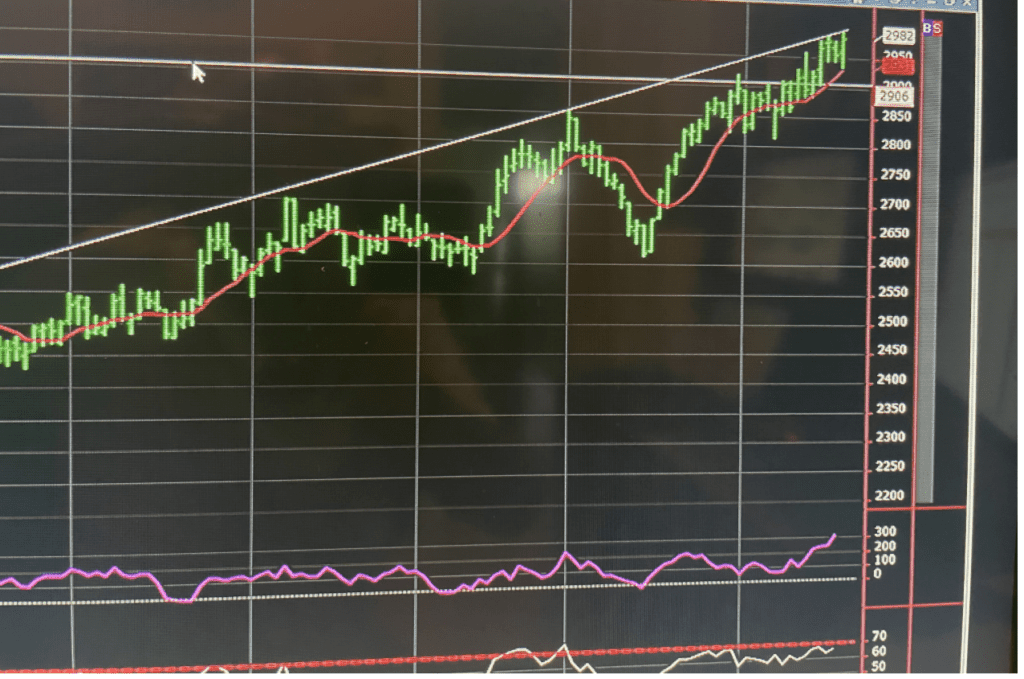
Soybeans: Ideas of a big 2023 crop as La Niña is gone, plus China demand concerns pressures November prices
I mentioned my more bearish attitude in November soybeans some 30-40 cents higher than this a week or two ago. While some of my research does suggest some heat and dryness in parts of the Midwest grain belt this summer, until I see actual U.S. problems, my bias recently was to sell out of the money-deferred call options long-term. Here too, I would not do this on a 50-cent break now.
The recent collapse in prices is due more to export competition from Brazil and poor demand rather than the weather.
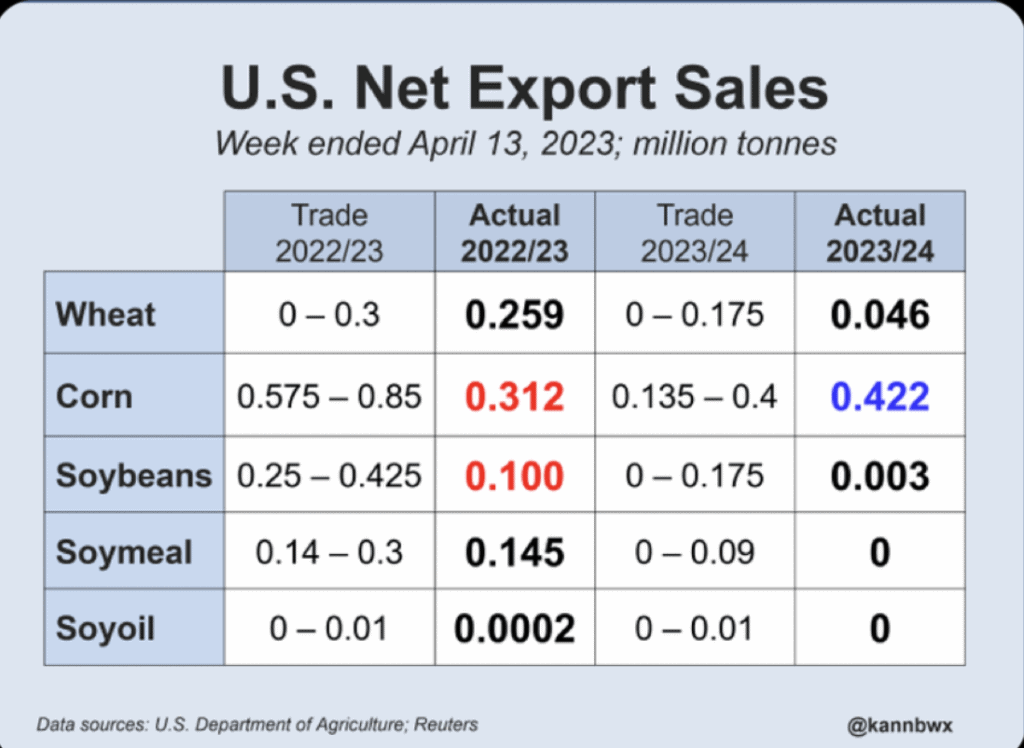
Coffee: Recommended taking big profits around $1.94-$2.00 on long positions early last week. Now what?
Over the last 8-10 months if you took my advice in call options, option strangles, and occasionally futures, potential profits on at least three to four trades were well over $7,000-$11,000 a contract. By far my best market over the last year, I want to wait for now for any new advice.
I also suggested long the ETF (JO), 2-3 weeks ago but to take profits of 7-15%, early to mid last week.
Will the 2023-24 crop later this year have a frost, drought, etc.? Stay tuned. Tight supplies continue and global weather problems in Indonesia and Colombia helped to ignite this market a week or two ago. The weather in Brazil, for now, is mixed.

Natural Gas: LNG exports and cool late April weather are supportive vs huge global supplies that are bearish
I can explain my view with this picture. Wait until May and June, if it gets hot, I will recommend a strong buy.


